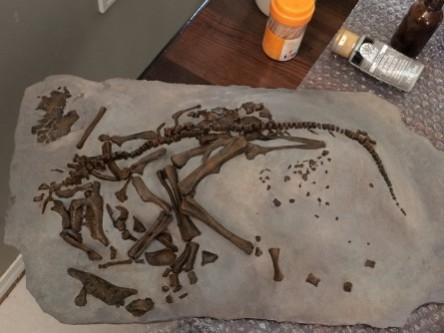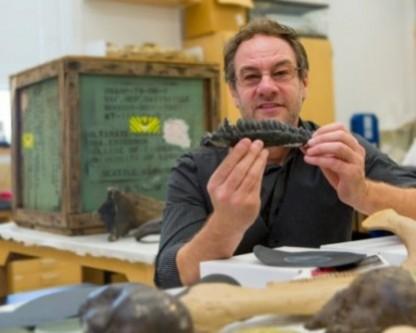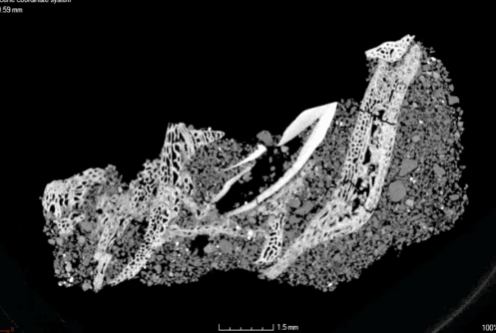
It is believed that the Cretaceous meteor strike is the reason behind the mass extinction of dinosaurs, but on the contrary, other species of birds and mammals have been booming up.
Also Read: Rare dinosaur brain fossil took a decade to be recognised!
The dinosaurs couldn't revive quickly from the impact of the meteor strike, which took place 65 million years ago and hence, ended up being extinct. The mystery behind the extinction of dinosaurs seems to have been solved by paleontologists, who found that these giants took around six month's time to hatch out of their shells and grow into adults.
The offsprings of the mammals and birds hardly took a few weeks time to exist, and this provided them with an advantage to avoid extinction. Birds take half the time to hatch out of their eggs in comparison to the dinosaurs.
This revolutionary research has been conducted by the Florida State University (FSU) and the University of Calgary, who joined hands and analysed fossils of rare dinosaur embryos to estimate the time taken by the dinosaur eggs to hatch, with the help of the marks present on the teeth of the babies and the embryos.
The growth of the dinosaur teeth resembled the tree rings that grow every year. These were observed in the microscopic lines referred to as dentine, which is a thick bony tissue that forms the bulk of a tooth found beneath the enamel. This helped the scientists to reveal the time incubation time duration of the dinosaur eggs.

"Some of the greatest riddles about dinosaurs pertain to their embryology -- virtually nothing is known," said Gregory Erickson, the FSU Professor of Biological Science, as reported by Proceedings of the National Academy of Sciences.
"We suspect our findings have implications for understanding why dinosaurs went extinct at the end of the Cretaceous period, whereas amphibians, birds, mammals and other reptiles made it through and prospered," Erickson added.
As birds are the living dinosaurs, researchers had assumed way back that the incubation period of the dinosaur was similar to that of the birds, whose eggs hatched over a span of 11 to 85 days.
The researchers analysed the fossils of the dinosaur embryos and found that the reptilian eggs, which are similar to the size of bird's eggs, usually consume double the time period which ranges from various weeks to several months.
"Time within the egg is a crucial part of development, but this earliest growth stage is poorly known because dinosaur embryos are rare," said Darla Zelenitsky, assistant professor of geoscience at the University of Calgary, as quoted by newswise.com.
"Embryos can potentially tell us how dinosaurs developed and grew very early on in life and if they are more similar to birds or reptiles in these respects," Zelenitsky stated further.
The dinosaur embryos examined in this research were of two types: one belonged to a sheep-sized dinosaur called protoceratops, which laid small eggs and lived in the Gobi desert; the other variety of embryo belonged to a giant duck-billed dinosaur, which laid eggs as heavy as 9 pounds and is found in Alberta, Canada.
The researchers estimated the exact time period for which the dinosaurs were developing in the eggs with the help of the growth lines.

"The teeth are kind of like tree rings, but they're put down daily. So we could literally count them to see how long each dinosaur had been developing," Prof Erickson stated.
The results of this research showed that the smaller embryos of protoceratops developed in their eggs in three months and the embryos of the giant hypacrosaurus dinosaurs took 6 months to develop within the egg.
The following study has been published in Proceedings of the National Academy of Sciences.














